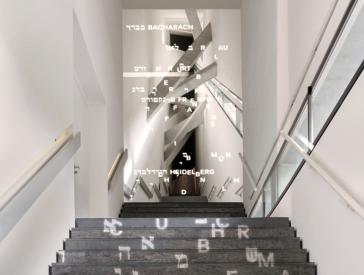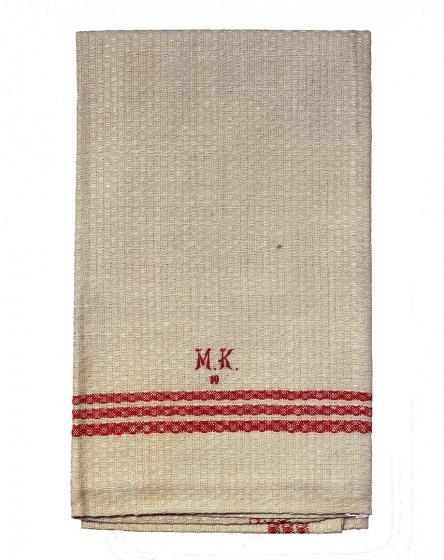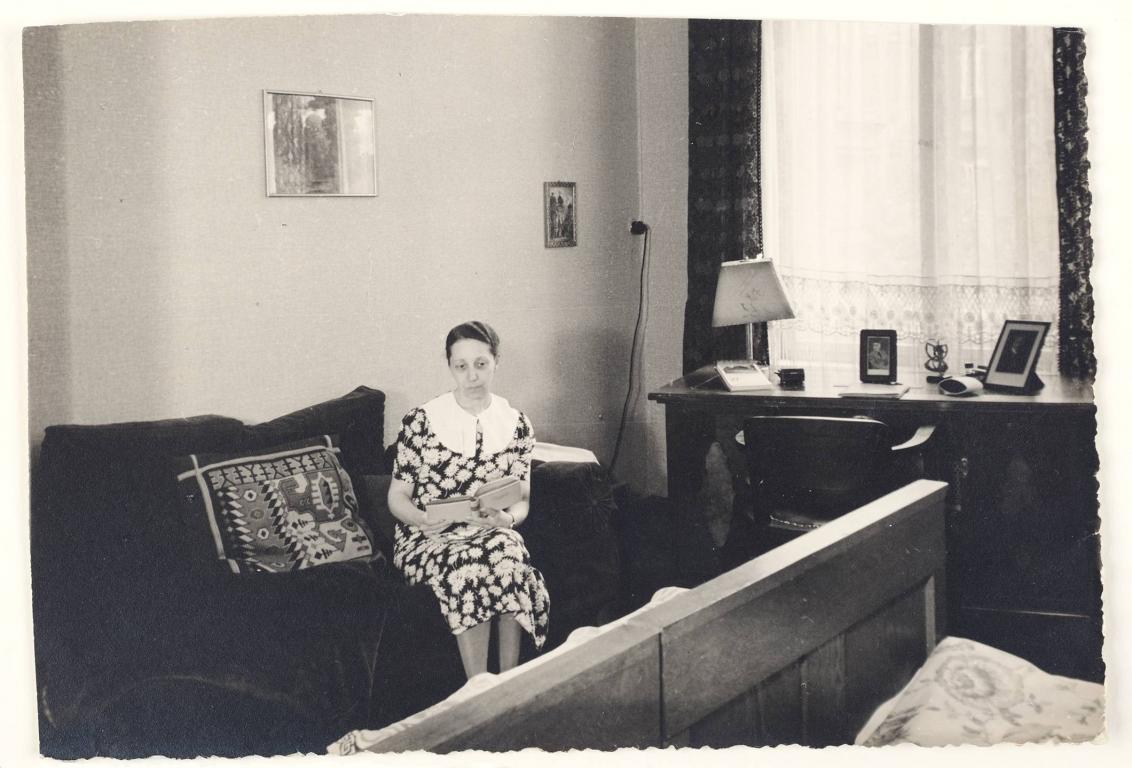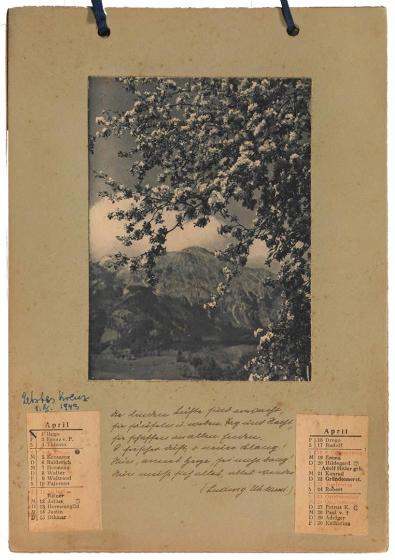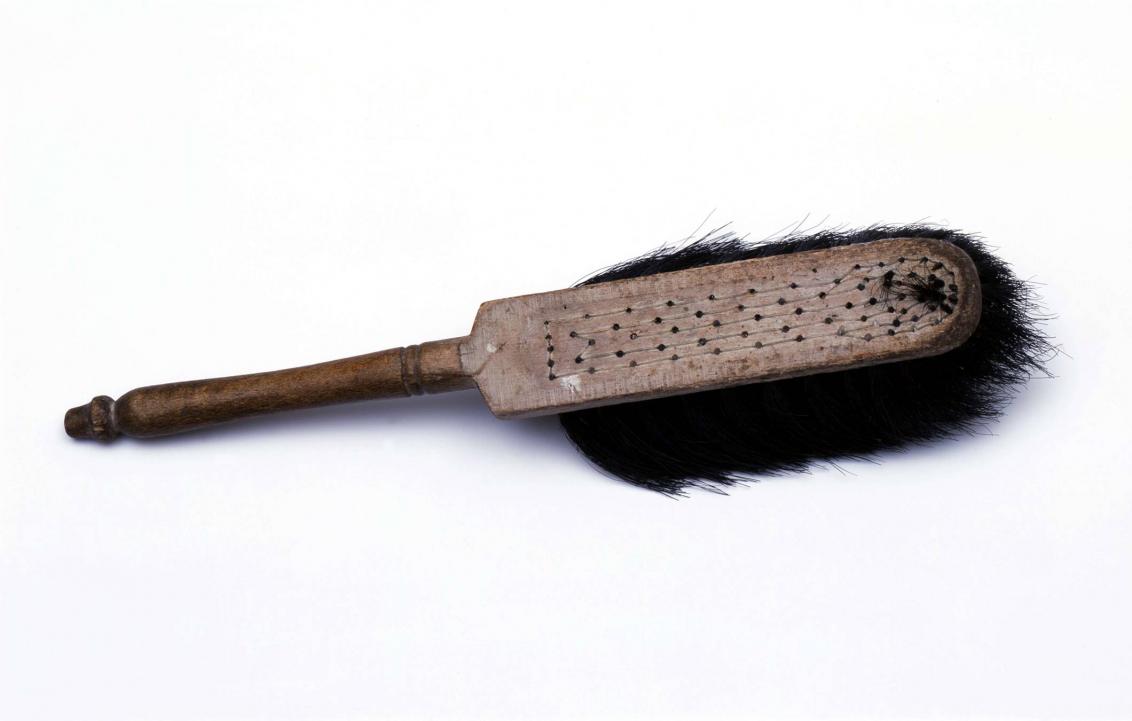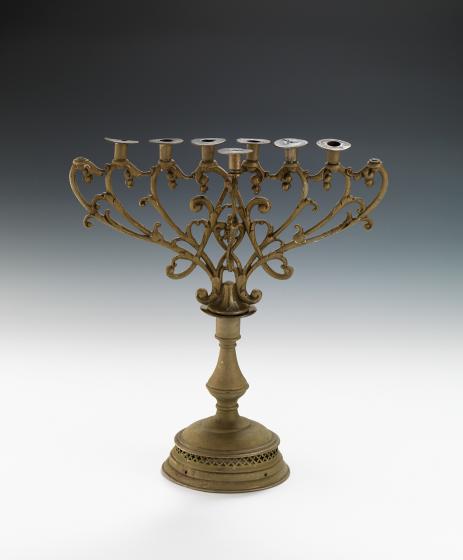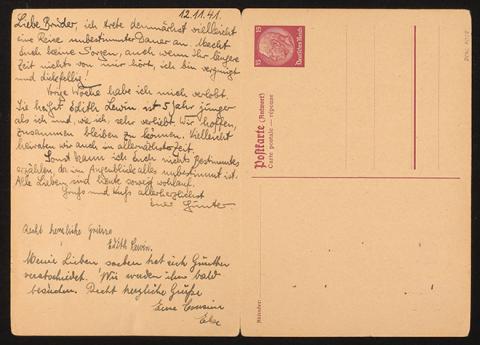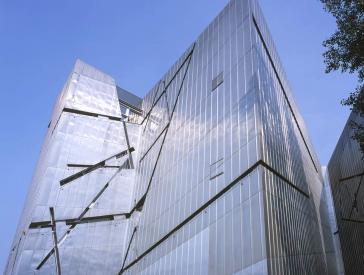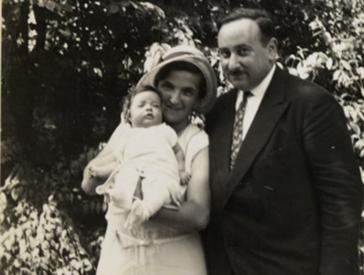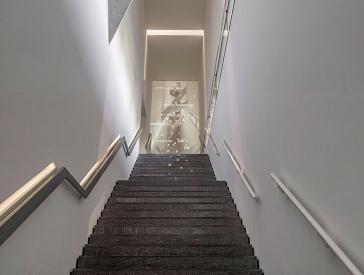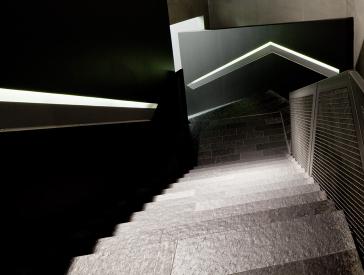
The Exhibition in the Axes
Biographies of German Jews between 1933 and 1945
If you go down the stairs into the lower level of the Libeskind building, you’ll encounter objects from the time of National Socialism on display. Along the Axis of Exile and the Axis of the Holocaust, they tell personal stories of persecution and exclusion, emigration and Holocaust.
Past exhibition
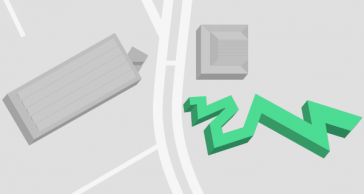
Where
Libeskind Building, lower level, axes
Lindenstraße 9–14, 10969 Berlin
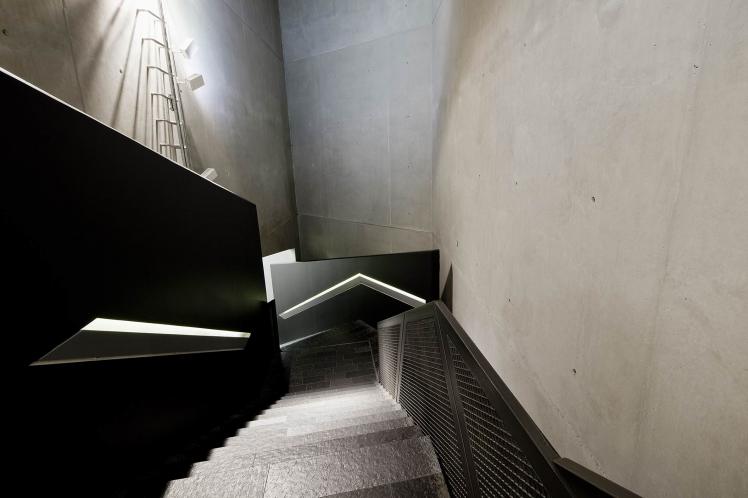
The axes of memory can be accessed via this staircase; Jewish Museum Berlin, photo: Thomas Bruns
Restrictive Limitations on What Refugees Could Take With Them
On the Axis of Exile, one glass case is dedicated to the sharply limiting regulations regarding what refugees were allowed to take with them when emigrating from National Socialist Germany. Four stories show what emigrants could save. These include the story of Margarete Sachs, mother of the poet and later Nobel prizewinner Nelly Sachs. She fled in 1940 with her daughter in one of the last passenger planes from Berlin to Stockholm. She took her wedding ring and her deceased husband’s ring with her. Wedding rings were among the few pieces of jewelry that could be taken.
Anti-Semitic Town Signs
Alongside the stories of emigration, we display photographs of anti-Semitic town signs with statements such as “Jews not wanted here.” Werner Fritz Fürstenberg, who had already emigrated to the Netherlands at that time, photographed the signs in 1935 in the western German countryside, in order to document the exclusion of Jews from German society.
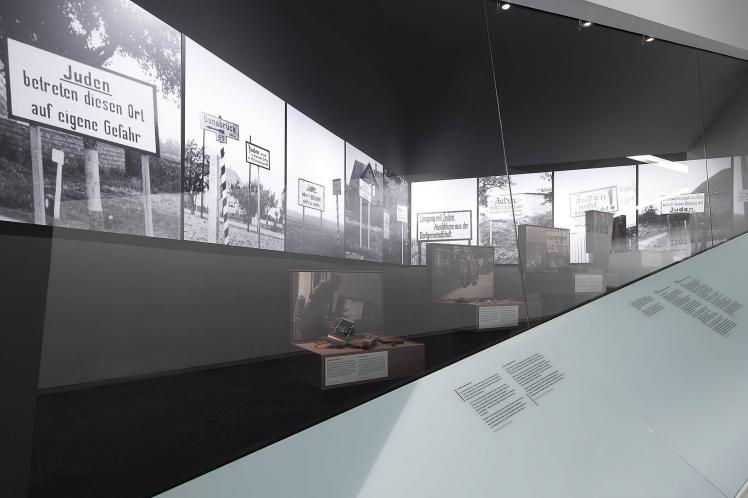
View into a showcase with antisemitic place-name signs; Jewish Museum Berlin, photo: Thomas Bruns
Notes, Letters, Family Photos, Everyday Objects
Glass cases are mounted in the walls along the Axis of the Holocaust. Like a black ribbon composed of fragments, they lead to the Voided Void, the Holocaust tower at the end of the axis. The glass cases contain notes and letters, family photos, household goods, and everyday objects. They tell of Jews who were murdered in the concentration camps. The museum has collected thousands of such keepsakes.
Keepsakes from the Axis Holocaust
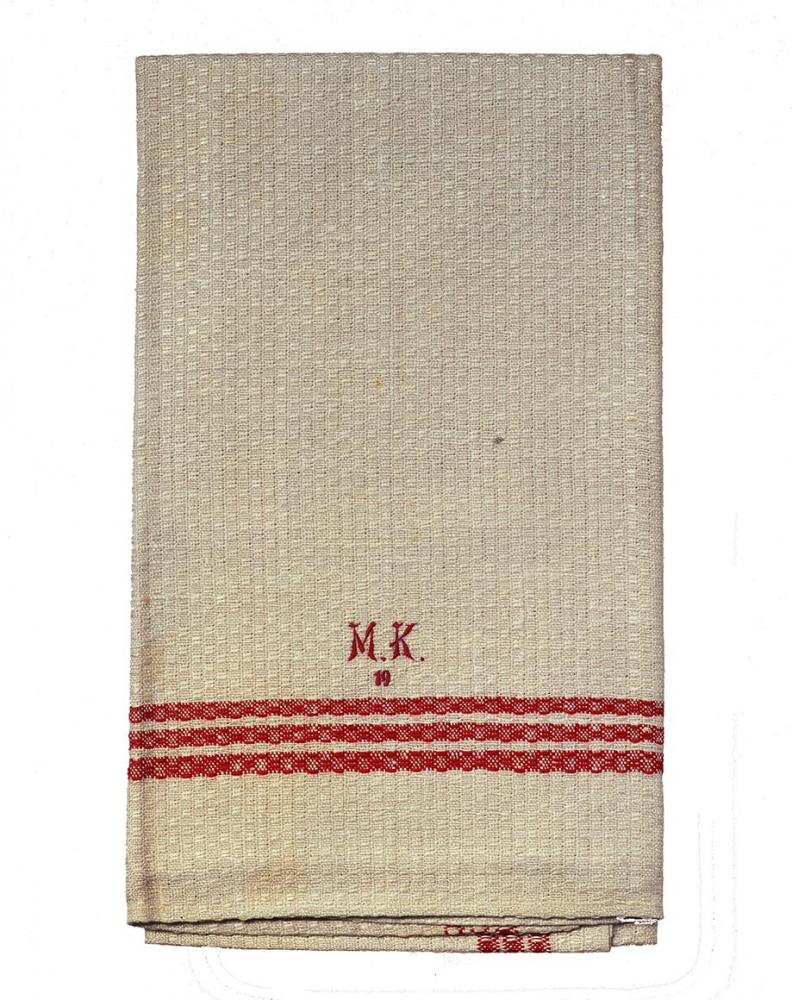
On 8 February 1938, 16-year-old Paul Kuttner left Berlin with a Kindertransport (“Children's Transport”) bound for England. His mother Margarete Kuttner packed this towel for him in his suitcase. In February 1943, she was deported to Auschwitz and murdered there. To this day Paul Kuttner has never used the towel. It is still folded as it was on the day that his mother put it in his suitcase; Jewish Museum Berlin, Inv. No. 2000/144/0, gift of Paul Kuttner, photo: Jens Ziehe.
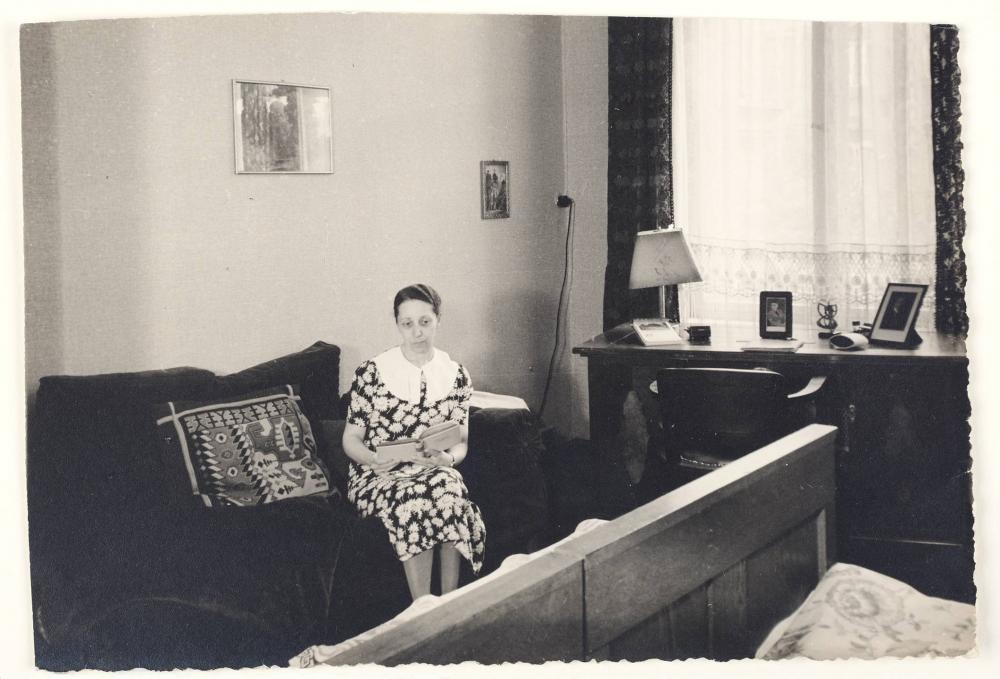
The photo shows Margarete Kuttner in her apartment in Berlin just before her deportation. Paul Kuttner gave the towel and photo of his mother to the Jewish Museum Berlin, along with other objects; Jewish Museum Berlin, Inv. No. 2016/185/0, gift of Paul Kuttner, photo: Jens Ziehe.
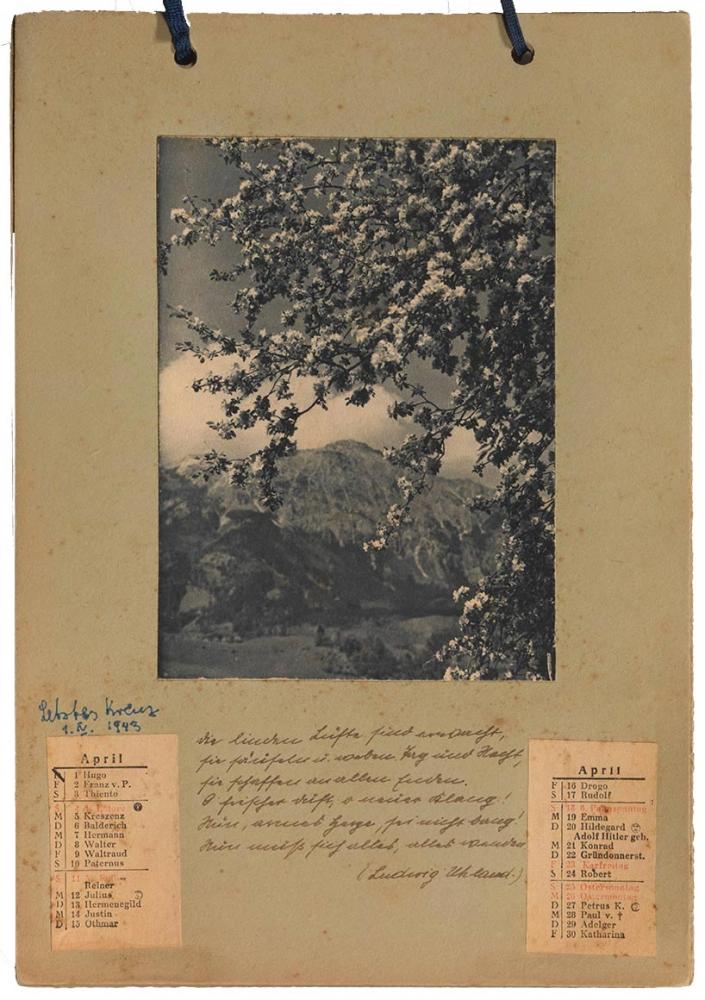
Clara Grunwald was sent this hand-made calendar from her friend in the Hakhshara Camp Gut Neuendorf, where she was working as a teacher. Clara Grunwald checked off every day until 1 April 1943. On 19 April 1943, she was deported to Auschwitz, where she was murdered; Jewish Museum Berlin, Inv. No. 2009/387/0, photo: Jens Ziehe.
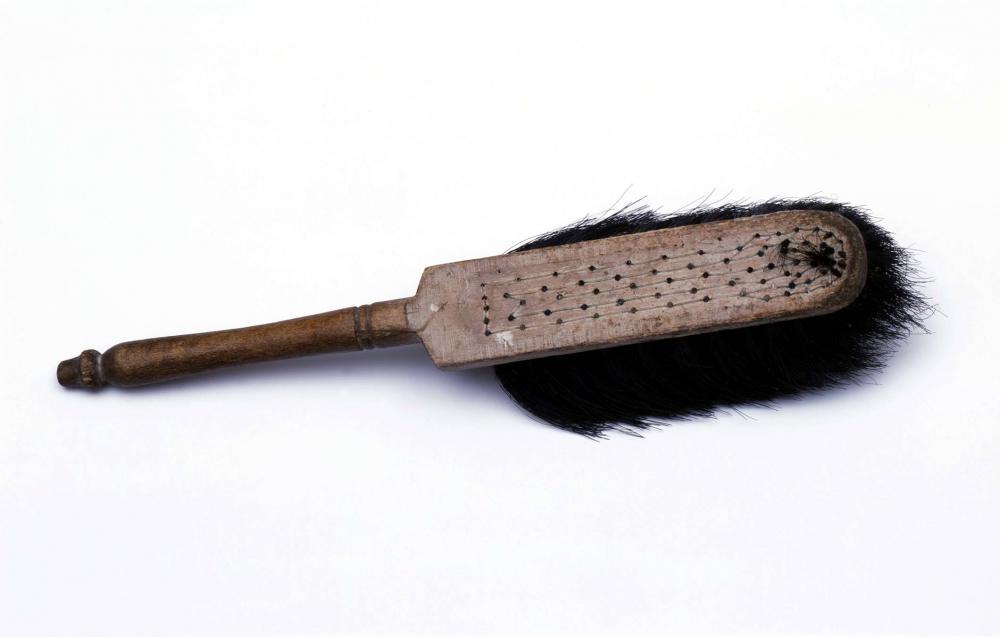
This hand broom was produced in the Otto Weidt Workshop for the Blind between 1940 and 1942. Most of the workers there were blind or deaf Jews. When the deportations began, Otto Weidt defended his Jewish workers as “relevant to the war effort.” He bribed officials from the Gestapo, procured forged papers for the persecuted, and supported them with food. He hid a family of four in the back room of his workshop. But his attempt to help them failed. They were betrayed by a spy, and the family was caught and deported to Auschwitz; Jewish Museum Berlin, Inv. No. 2001/375/0, photo: Jens Ziehe.
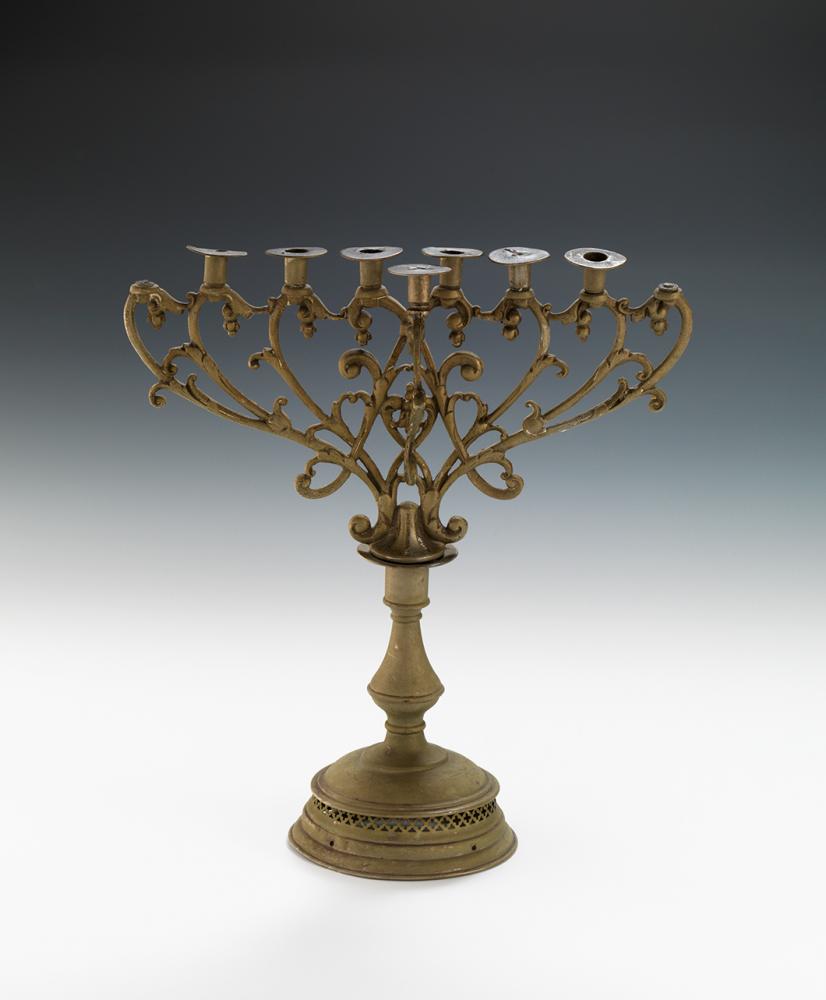
The history of this Hanukkah candelabrum is only partly known: A Shoah survivor returned to Berlin after the war to look for his parents. He did not find anyone in the family home. But he met a former neighbour who gave him the candelabrum. She had received it from his parents before they were deported. The man passed the candelabrum on to Saul Loeb. Saul Loeb had come to Europe in 1944 as an American soldier, and after the end of the war he took care of Shoah survivors in Berlin. His daughter donated the candelabrum to the Jewish Museum Berlin in 2001; Jewish Museum Berlin, Inv. No. 2001/197/2, gift in memory of Saul M. Loeb, photo: Jens Ziehe.
They include farewell letters written before deportation. Because they were censored, sometimes they speak euphemistically of “a trip” or “going away:”
“12 November 1941
Dear Brother, I may soon undertake a trip of undetermined length. Don’t worry, even if you don’t hear from me for a longer time, I am light-hearted with a thick skin! Last week I became engaged. Her name is Edith Lewin. She is 5 years younger than me and, like me, very much in love. We hope to be able to stay together. Maybe we will marry in the very near future. Otherwise, I can’t tell you anything for certain, since at the moment, everything is uncertain. All of your dears are fit and well so far. Greetings and kisses warmly Your Günter”
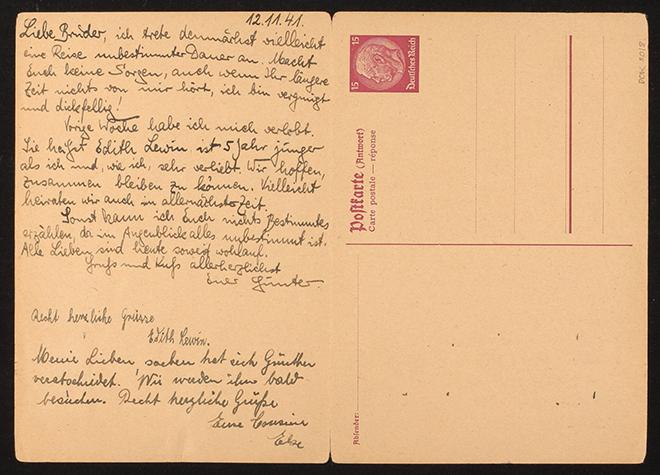
Postcard by Günter Behmack to his brother Rudolf in Shanghai, Berlin 12 Nov 1941; Jewish Museum Berlin, gift of Wolfgang Rademacher, photo: Dominic Strieder
Exhibition Information at a Glance
- When13 Sep 2001 to 14 Mar 2020
- WhereOld Building, lower level, axes
Lindenstraße 9-14, 10969 Berlin
See Location on Map
